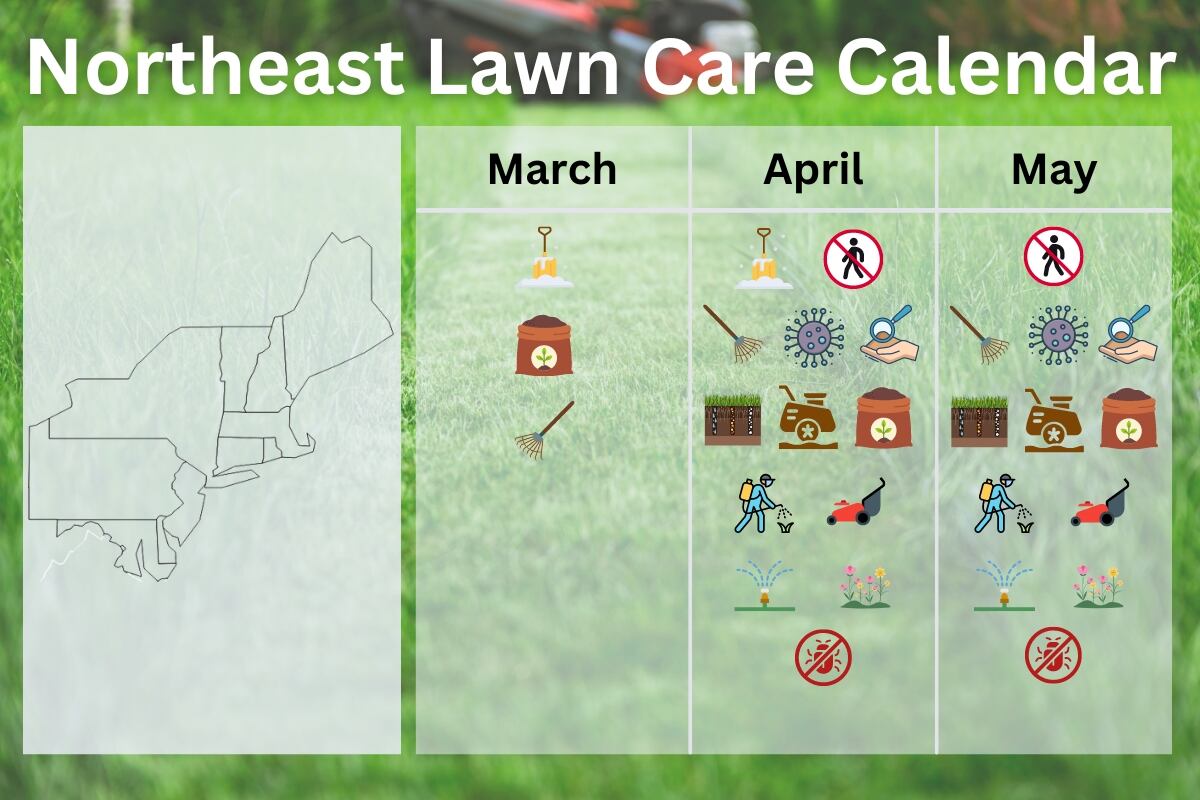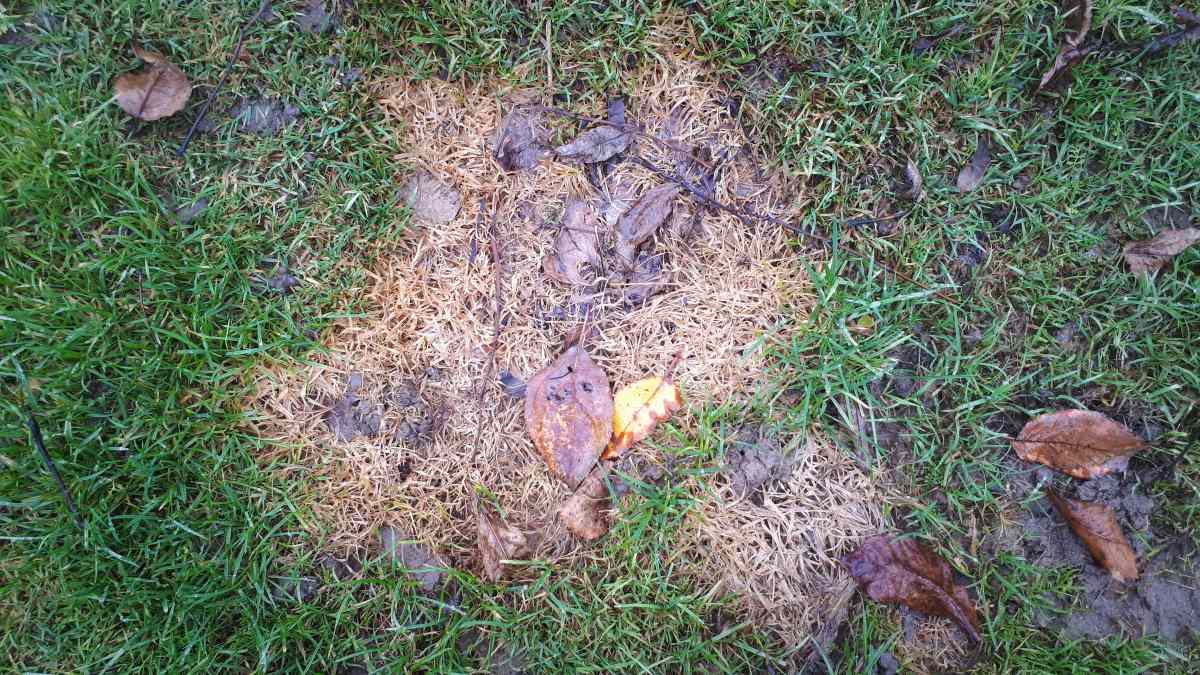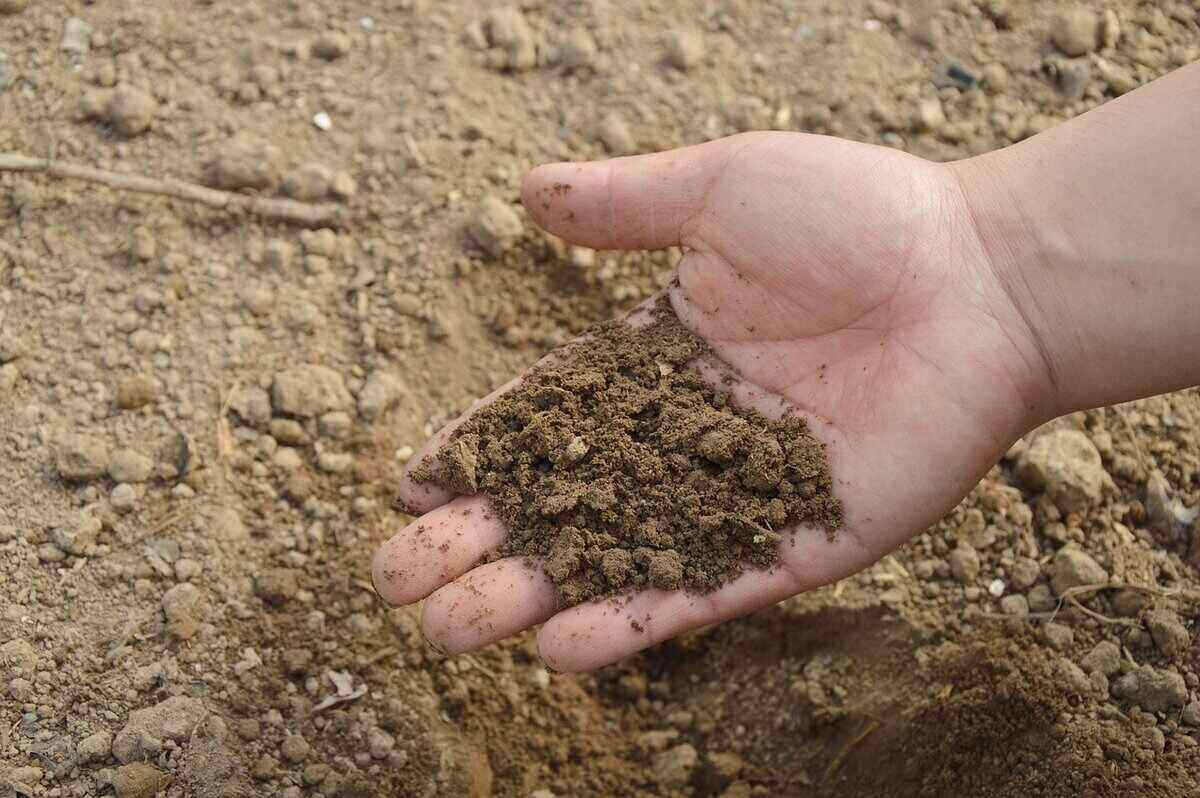
Winterize southern lawns so they stay strong through winter. Proper preparation includes removing lawn debris and testing the soil. Additional steps depend on your location and grass type.
We interviewed two of the South’s top turf specialists, read through research, and sprinkled in personal practice to provide an itemized plan. It includes tips for winterizing warm-season and cool-season grasses across America’s southern states.
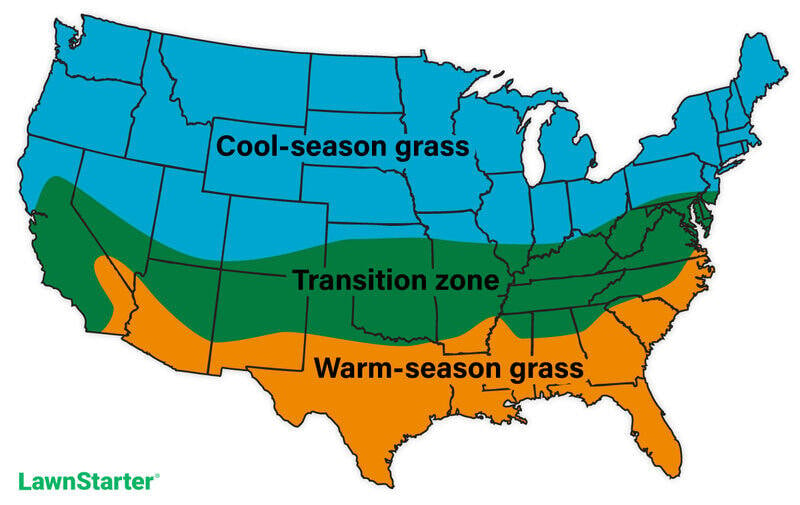
Discard Debris
If fall leaves cover more than 10% – 20% of your lawn, remove the debris before the first freeze. Then, keep the grass debris-free through winter. When you don’t remove fallen leaves, they can smother the dormant lawn. Wet leaves also become a breeding ground for pests and diseases.
What if the ground never freezes? With average winter highs in the 70s, South Florida doesn’t have a typical fall or winter. Leaves fall at a slow rate, but make sure they don’t over-accumulate and swiftly clean storm debris. This gives your grass a breath of fresh air and mitigates moisture.
The best ways to clean leaves include:
- Leaf rakes: If you don’t mind using some elbow grease, the best leaf rakes are a simple leaf removal solution.
- Leaf blowers: The best leaf blowers make leaf removal a breeze. If you’re looking for a potent yet affordable battery blower, check out the Enhulk Pro Series 930 CFM.
- Mulching mowers: If you have less than 50% leaf coverage, consider one of the best mulching mowers. Mulched leaves return organic matter to the soil, and some species prevent broadleaf weeds. We mulched leaves plus grass over a foot tall with the Wild Badger Power 40V Self-Propelled Mower.
Master Mowing
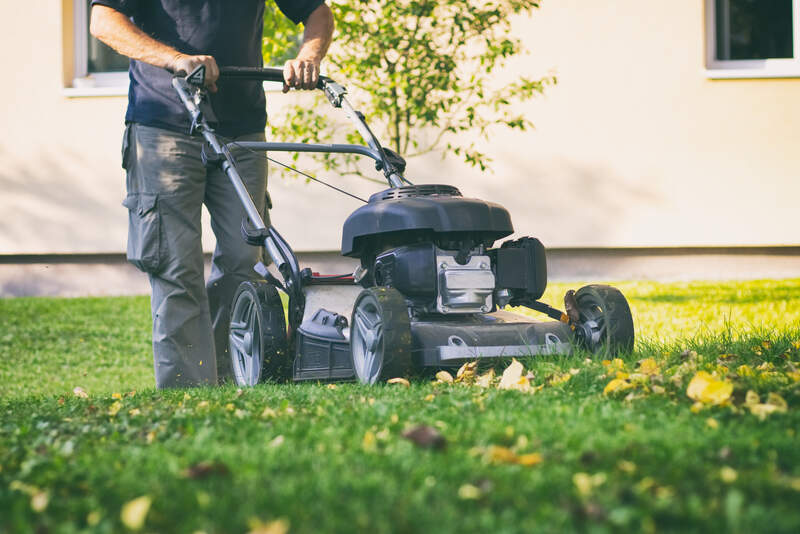
For southern lawns to win the winter fight, it’s essential to mow your grass right. We spoke with Dr. Becky Bowling of the University of Tennessee and Dr. Clint Waltz of the University of Georgia. The renowned southern turf experts cleared up some common misconceptions.
Ideal Mowing Height
Warm-Season Grass
Both experts say don’t lower your mower in the fall. Waltz told us, “There’s no sense in putting the grass under any kind of stress as it’s moving into less active growth.”
Bowling tells Tennessee residents that warm-season grass “should be left at the upper end of its appropriate mowing height range, and mowed frequently enough to minimize any potential stress from mowing prior to winter.” She recommends keeping it at that mow height until spring green-up.
South of the Appalachian mountains, winter is much milder. Waltz recommends that most Georgia residents with warm-season grass not adjust their mower deck at all in the fall.
Cool-Season Grass
Waltz says lowering the cutting height in fall improves the grass’s appearance if you live in the transitional zone and have cool-season grass. As temperatures cool, the growth season peaks. Lowering your mower deck can inspire striping and give your lawn that “wow factor.”
Last Mow of the Season
When the grass stops growing, halt mowing. The date of the last mow before winter differs depending on climate and grass type:
- Warm-season grasses typically go dormant when the soil temperature drops below 55°F. Waltz says even in South Georgia and North Florida, grass usually goes dormant for a month or two around January. However, South Florida lawns typically need year-round mowing.
- Cool-season grasses typically stop growing when the soil is around 45°F and the air nears freezing.
Manage Moisture
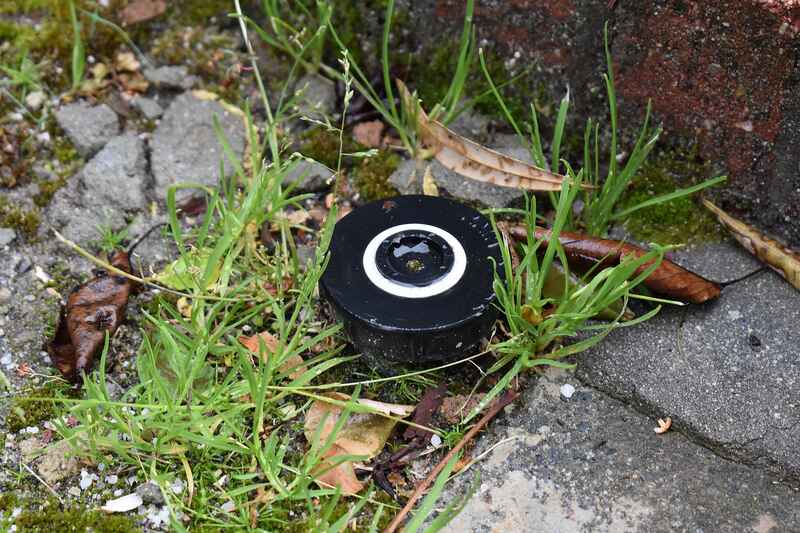
Healthy grass is well-hydrated. However, many southern states, including Arizona, Florida, and Oklahoma, are known for dry winters. Both Bowling and Waltz stress the importance of proper watering in the fall and winter.
Watering Woes
Before relocating to Rocky Top, Dr. Bowling was a professor at Texas A&M. She told me the “biggest challenge” for both Tennessee and Texas residents is “desiccation” (i.e., tissue drying).
“As much as possible, supplemental irrigation should be applied when there is no rainfall to keep soil conditions from getting too dry,” Bowling said.
Although grass needs less water when dormant, Bowling says “deep watering at least every 3 to 4 weeks may significantly reduce the likelihood of desiccation.”
Sprinkler Winterization
It’s important to winterize your sprinklers. Bowling explains that homeowners should do so to “protect components and reduce costs associated with replacing parts the following year.”
If you project periods of freezing temperatures, fully winterize your sprinkler system:
- Inspect the system for damage and make any necessary repairs.
- Turn off the water supply and timer.
- Drain the water. Bowling points out that you don’t typically have to go as far as draining underground pipes in Tennessee. Her advice applies to most southern states.
- Insulate exposed components. Bowling recommends using foam insulation. She advises using your leftovers to insulate the backflow preventer and valves.
In areas that rarely freeze (such as Central Florida) homeowners should still have the system inspected before winter and shut off the water when they expect temperatures to go below freezing.
Even in Miami, you should get your sprinklers inspected before the dry season.
Sustain Soil
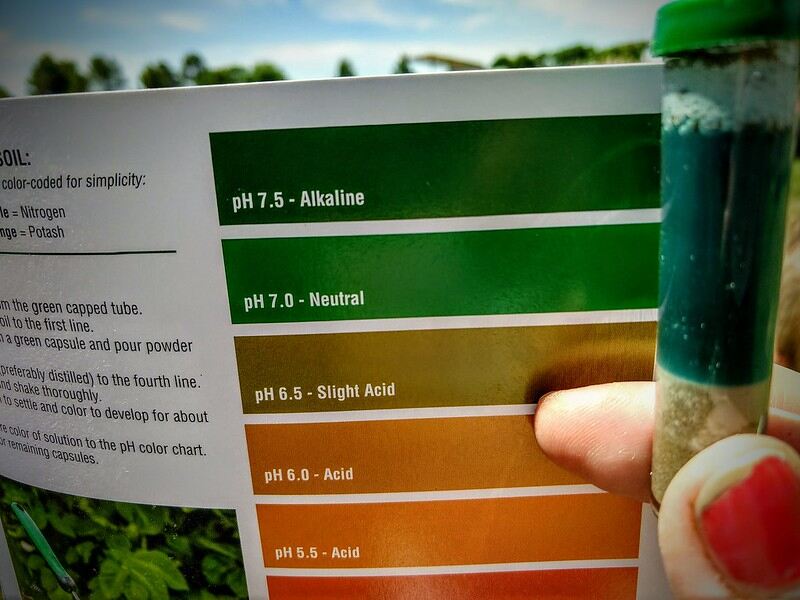
Savory soil keeps grass healthy and lush.
Consider the following to fortify your lawn in the fall so it can withstand the winter:
Soil Testing
Bowling warns, “The biggest mistake I see folks make with their lawns is to over-love them.” She and Waltz both suggest homeowners avoid doing too much by testing the soil.
Soil test results superseeds anything written on product packaging, pamphlets, or blogs. It tells you exactly what your soil needs, including levels of:
- Nutrients
- Organic matter
- pH
You should fix deficiencies, but as per Bowling, unneeded soil supplements are potentially “detrimental to overall lawn health.” She goes on to explain that there’s little upside to blindly adding fertilizer and nutrients. If the soil doesn’t need it, it’s not helping the grass thrive.
N-P-K
The primary nutrients grass needs to thrive are N-P-K:
- Nitrogen (N) speeds growth, strengthens stems, and gives the grass a rich green color. N-deficient lawns have slow growth, short stems, and thin leaves. But too much N can cause excessive thatch or fertilizer burn.
- Phosphorus (P) encourages deep rooting and healthy growth. Deep grass roots take in more nutrients and water. A lack of P can stunt growth, cause discoloration (i.e., dark green, purplish, or reddish), and inspire soil erosion. Too much P can cause zinc and iron deficiencies, stunt growth, and contaminate runoff water.
- Potassium (K) improves grass health, making it less susceptible to stress damage (e.g., adverse weather, pests, and diseases). You can read all about how it works in our article, “What Does Potassium Do For Your Lawn?” A lack of P can cause yellowing leaves, wilting, turf diseases, and elevated weed growth. Too much P can lead to salty soil and other nutrient deficiencies.
Nitrogen
Warm-season grass
Waltz points out one of the most common fertilizer mistakes is giving warm-season grass too much fall nitrogen (N). Fertilizer companies promote fancy fall fertilizers with high levels of N. He advises against applying products marked “winterization” or “winter guard” to warm-season grasses like centipede and St. Augustine.
However, Bowling calls attention to research suggesting a fall nitrogen deficiency could delay spring green-up. She tells Tennesseans with Bermuda and Zoysia lawns to “make a final nitrogen application about 6 to 8 weeks before their historic first frost date to try to prevent deficiency.”
Our recommendation: Test your soil and if deficient, apply the appropriate amount of nitrogen 6 to 8 weeks before the first frost.
Cool-season grass
Cool-season turf, such as Kentucky bluegrass or tall fescue, typically needs a hearty dose of fall nitrogen. With a “bimodal growth habit,” Bowling explains that cool-season grasses gear up for growth in the fall and spring.
She recommends adding soil inputs to cool-season grass when the air is 60 and 75°F and testing fall soil to choose the right fertilizer for your lawn.
Phosphorus & Potassium
Warm-season grass
If a soil test shows a deficiency in phosphorus (P) or potassium (K), Waltz and Bowling recommend remedying that before winter.
Bowling goes on to explain, “There is a common belief that applying excess potassium prior to winter is beneficial, but there is no research that I am aware of to support this – only studies that indicate sufficient potassium (not deficient) is important.”
Cool-season grass
Fall calls for full fertilization of cool-season turf. When applying nitrogen, you’ll also apply any needed phosphorus or potassium.
Other Amendments
Southern homeowners should test the soil’s pH, micronutrients, and organic matter, adding anything that’s lacking. Common inputs include:
- Lime: Waltz says Georgia soil sometimes needs lime in the fall to make it less acidic. There are many warning signs that indicate a lime deficiency.
- Sulfur: Adding sulfur makes soil less acidic. Sulfur is typically applied in early spring, but elemental sulfur can be added throughout the year.
- Iron: A lack of iron discolors grass and reduces its overall health, making it weaker through the winter.
Aeration
The best time to aerate cool-season grass is in the early fall or spring, but warm-season grass should wait until late spring.
Clay soils need frequent aeration, but sandy soils rarely need aerating. Georgia Piedmont soil contains a ton of clay. Areas in Arkansas, Mississippi, and North Carolina also have dense clay pockets.
Wipe-Out Weeds
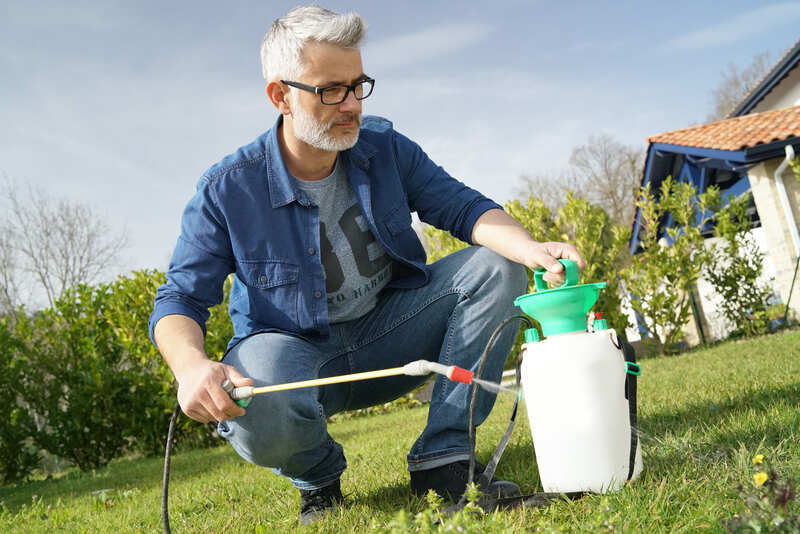
Grass grows more lush when it doesn’t compete with weeds. Weeds steal food and water from the soil and can even block sunlight to your grass.
Fall is the time to apply pre-emergent herbicides. Waltz recommends using them to prevent winter annual weeds that commonly sprout in the south, including:
- Annual bluegrass
- Common Chickweed
- Henbit
- Swinecress
In the Atlanta area he advises applying around the 3rd to 4th week of August. If you live in the Appalachian mountains, you’ll apply pre-emergent herbicides a little earlier and if you live further south you’ll apply it a little later.
Deter Disease
As the temperature drops, your lawn may be susceptible to lawn diseases, including:
- Large Patch: Waltz warns that centipede and Zoysia are particularly susceptible to large patch in late fall if the lawn is wet from rain or irrigation. He suggests using a little preventive fungicide to prevent illness.
- Leaf Spot: Bermuda lawns are the most susceptible to leaf spot. However, Waltz reassures us not to worry if Bermudagrass gets a little leaf spot when the temperature drops. That’s normal, and if otherwise healthy, it will likely heal on its own.
- Snow Mold: These cold-resistant fungi often die once the weather warms up. However, many people get an allergic reaction while the lawn is infected. To prevent snow mold, stay on top of fall and winter lawn care. It’s really important to keep the lawn free from leaves and debris.
Opt to Overseed
Here are some guidelines for fall overseeding:
- Don’t overseed with warm-season grass seed.
- Although warm-season lawns don’t require fall overseeding, Dr. Gerald W. Evers says overseeding with cool-season perennial grass helps keep grass green in the winter.
- Fall is the best time to overseed cool-season lawns.
- Waltz recommends overseeding tall fescue right after you aerate.
- Bowling and Waltz both recommend inter-seeding cool-season grass.
FAQ About Winterizing Your Southern Lawn
How much does it cost to winterize a sprinkler system?
On average, winterizing a sprinkler system costs about $90, with most homeowners paying $60 to $120.
How do you care for your lawn in the winter?
To care for your lawn in the winter:
- Remove debris
- Keep watering
- Control weeds
- Avoid salt
- Reduce lawn traffic
- Don’t mow if it doesn’t grow
What are the benefits of cleaning your lawn in fall?
The main benefits of fall yard cleanups are:
- Warning away winter damage
- Preventing pests
- Improving soil health
- Preparing for spring growth
- Encouraging environmental sustainability
- Enhancing curb appeal
When to Hire a Lawn Care Pro
The best way to keep your lawn healthy all year long is to hire a pro. LawnStarter connects you with affordable lawn care pros who are fully insured. Our user-friendly website and mobile app make obtaining quality lawn care as easy as ordering a pizza.
Sources:
- Bowling, Becky (2024, October 29). Personal Interview.
- Bowling, Becky. “Preparing Turfgrass for Cold Temperatures: Common Questions“. Fall (part 2) 2024 – Winter Prep. TimelyTurfgrass Memo. UT Extension Institute of Agriculture
- Evers, Gerald W. “A Guide to Overseeding Warm-Season Perennial Grasses with Cool-Season Annuals”. Texas A&M University Agricultural Research and Extension Center
- Hurley, Janet. “SPN: Warm-Season Turfgrass Fall/Winter Preparation“. Texas A&M AgriLife Extension
- Kowalewski, A. R., Calhoun, et. al. (2010). “Using cultural practices and leaf mulch to control weeds in established turfgrass”. Applied Turfgrass Science, 7(1), 1–10.
- Parker, Mary Michaela. “To Rake or Not to Rake?” Mississippi State University Extension Service
- Sanders, Kayla, et al. “Louisiana Home Lawn Series: Sulfur”. LSU AgCenter
- Sanders, Kayla, et al. “Louisiana Home Lawn Series: Potassium“. LSU AgCenter
- Smith, Kerry, et al. (2019). “Excessive Phosphorus In Garden Soils”. Alabama A&M & Auburn Universities Extension
- Waltz, Clint (2024, October 25). Personal Interview.
- Waltz, Clint. “Fall Interseeding and Overseeding: Not One and the Same”. UGA Extension. The University of Georgia
- “Weed Control in Home Lawns“. UGA Extension. The University of Georgia
Main Photo Credit: House in Fernandina Beach, Georgia / Bob / Adobe Stock Free / License
